My work reflects a lot on the symptoms of commodity culture and consumerism within the context of time and this digital moment in which we live. My hope is for the work to provoke my audience to think deeper about the broader impact of how time and space has changed as a result of the internet age and how nostalgia is not necessarily something we should be nostalgic for, but wary of.
Katie Neece believes making more art, even if you don’t like it, is the way to get past the twin hurdles of conceptual difficulty and uncertainty.
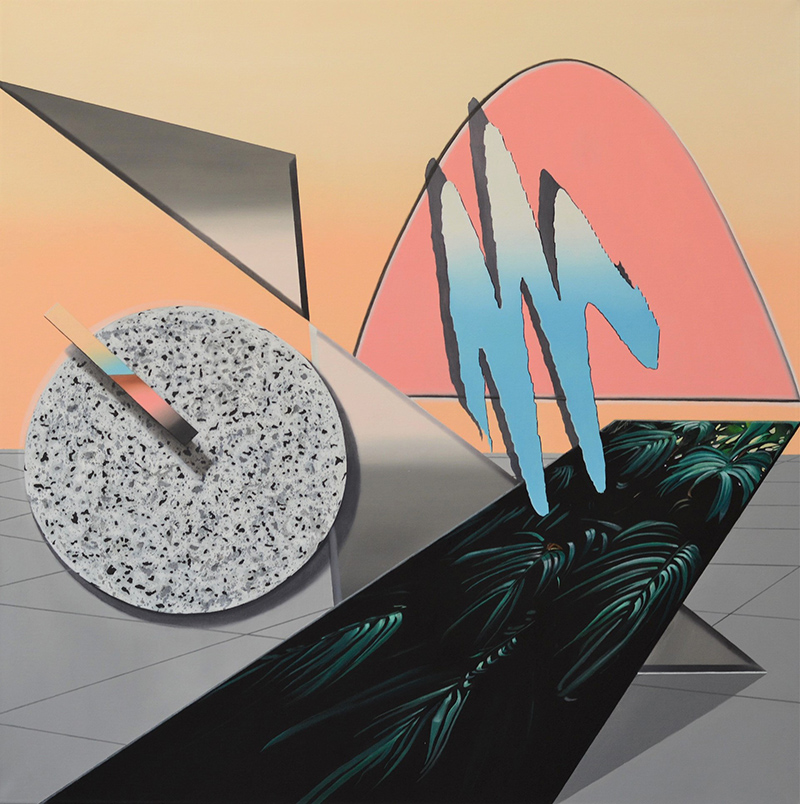
Forum
Take us to the beginning of your story. How did your tryst with art begin?
I am lucky to have been raised by two very creative and artistic parents. They would always take me to museums and expose me to different types of art. One of my favourite things to do was look through artist books as a kid. So, I was raised to love and appreciate art from an early age. My parents have always been encouraging of my artistic endeavours.
My art teacher in high school inspired me to try oil painting and I was hooked. After high school, I decided to pursue a Bachelor’s Degree in Fine Arts at Indiana University, South Bend, with a minor in art history. I, then, continued my passion for art even further by pursuing a Master’s Degree in Painting at the University of Notre Dame. I am currently working on a body of work for my upcoming thesis show.
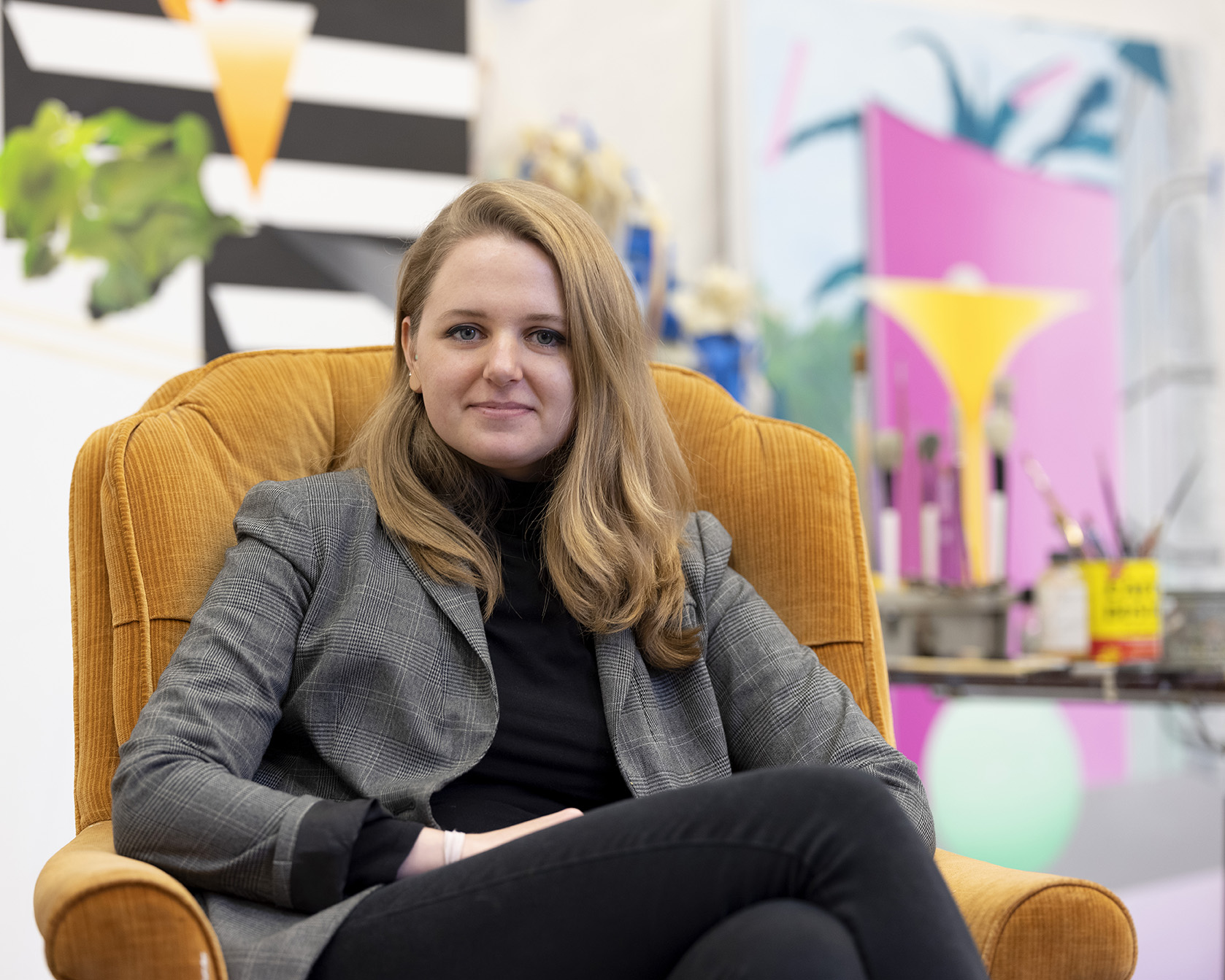
Tell us about the evolution of your practice?
My practice has changed and adapted so much throughout the time I have been working and I am sure it will change and adapt even more in the future. I find the evolution exciting and rewarding. I enjoy challenging myself and taking risks to further my work. I have gone from painting surreal imagery to more dark and baroque influenced imagery to using more reference materials and software programs to create digitally influenced work.
I have cut wood panels and used a laser cutter to make strange geometric works. Now I paint digital compositions on large canvases. There are a lot of exciting iterations in the work I am creating now. I welcome those challenges and try to learn from them. My work is more conceptual and heavily based on research, and that is taking it into exciting new directions.
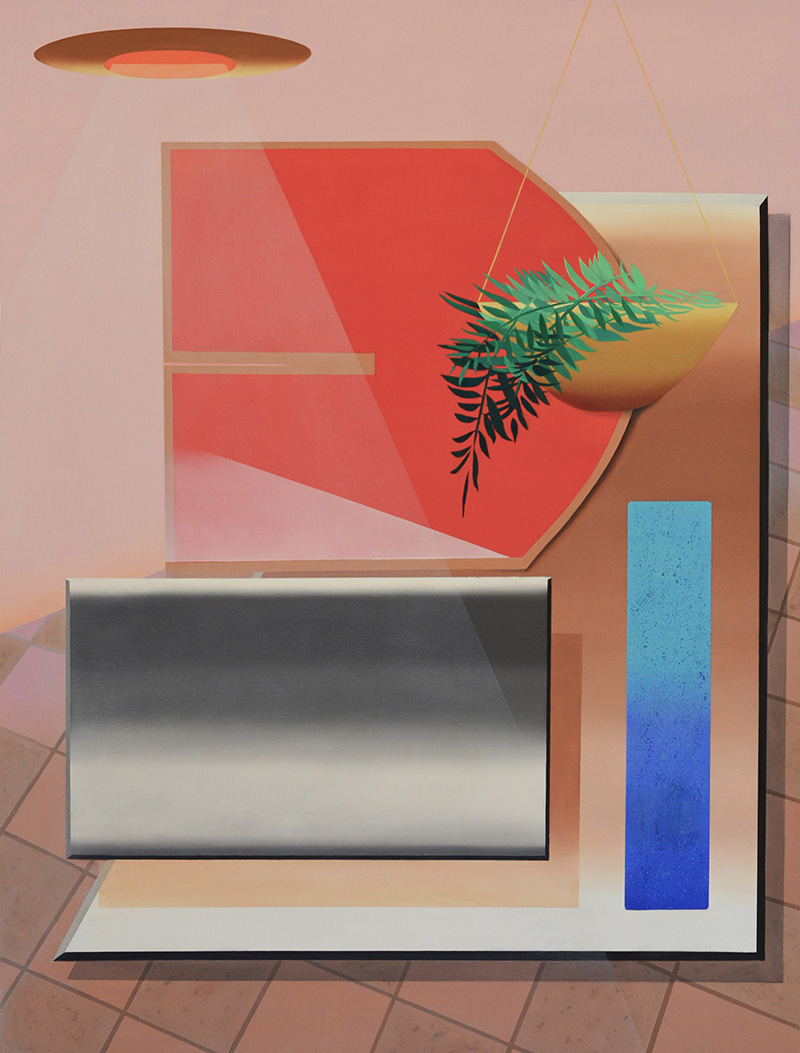
Virtual Stroll
What were your biggest lessons and hurdles along the way? Any memorable moment?
What I learned, most importantly, is that you have to fail at something in order to understand it or do it better in the future. I think failure is imperative in being an artist. Sometimes things will not work out for a reason, and being open to that is important and necessary. I struggled a lot with making things perfect and not seeing the bigger picture and the work would suffer. The most memorable moments were when the risks and the research paid off. So, I try to keep an optimistic and open mind for I believe it will positively impact my future and the future of my work.
What inspires you? Take us through your process and continuous frameworks of reference.
I am always inspired by what other artists are making. I love going to shows and talks by artist along with looking at social media to see what other artists are working on and what they are inspired by.
My work right now is heavily inspired by the vaporwave genre of music. It is a micro genre of electronic music born on the internet in the early 2010s. The style borrows the 1980s and 1990s mood music styles by remixing, sampling and manipulating pop music, R&B, and mood music tracks using chopped or skewed techniques. Its surrounding subculture is sometimes associated with an ambiguous or satirical take on consumer capitalism and pop culture, and tends to be characterised by a nostalgic or surrealist engagement with the popular entertainment, technology and advertising of previous decades.
I use the engagement on consumer capitalism within vaporwave to place these paintings in an illusionistic shopping mall. With the American Midwest shopping malls dying and becoming abandoned because of digital commerce and online shopping, I use the ’80s and ’90s American mall aesthetic as a site to incorporate these bright, fun and lively design motifs and forms as a reference to an inherent optimism in a utopian future that has continually failed to materialise. This re-contextualisation is an attempt to illustrate that the past continually reminds us of the future’s failure in the form of haunting. The geometric forms like triangles, rectangles, circles, and squiggles, endlessly recycle throughout history, harkening back to the early 20th century European avant-garde. I am fascinated with these forms and how they continue to proliferate and haunt us even up to the present time.

Pastel Prominade
What is the primary role of an artist? How do you describe yourself within the context of challenging people’s perspectives via your work?
The primary role of the artist is to be an agent of reflection of culture, whether that is as an extension of their personality in their work or broader social or political concerns. The role of the artist is extremely important within the currents of culture.
My work reflects a lot on the symptoms of commodity culture and consumerism within the context of time and this digital moment in which we live. My hope is for the work to provoke my audience to think deeper about the broader impact of how time and space has changed as a result of the internet age and how nostalgia is not necessarily something we should be nostalgic for, but wary of.
How do you balance art and life?
Balancing art and life can definitely be a challenge at times. I find that my planner is my best friend. Teaching and working on writing or my paintings definitely has to be accounted for.
I periodically take in commercial work, but only when I have enough time to devote to it. I am known for packing as much as possible into one day so I can get everything done, but burnout is definitely inevitable at times when I create too much stress for myself. I like to make sure I schedule tasks that are manageable, that get the job done, and allow some “me” time. Allowing time to hang out with my husband and our dogs after a busy day really helps alleviate the stress of the day. Often we feel like we are obligated to say yes to everything, but it is okay to say no if it saves your sanity, so you can put your time into your passion projects.

NewYou!
How do you deal with the conceptual difficulty and uncertainty of creating work?
The best way to tackle conceptual difficulties and uncertainties is to just make work and make a lot of it, even if you think it is bad. To me, there is nothing but fruitful experiences to be gained from failures. Conceptually, it helps to get feedback from other artists and share with them what you are reading or interested in. There can be some really generative discussions and ideas that can come out of that.
How does your audience act and react to the work?
Some people start to reminisce about their childhood or teenage years, others get really sad and think my work is depressing, and others find it cheerful. I get a lot of different reactions which I love, because it is really interesting to see what people take away after seeing my work.
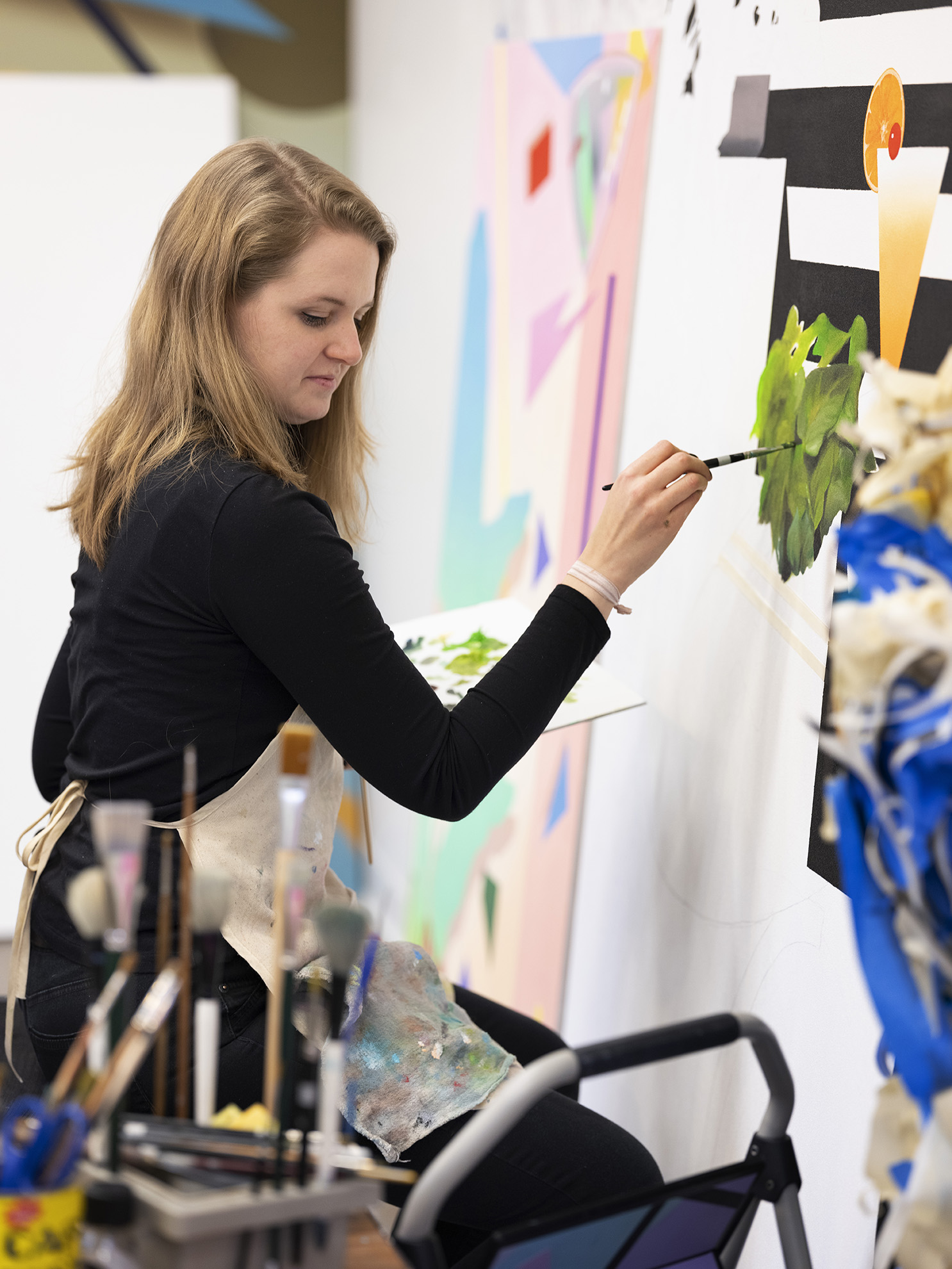
What are you looking for when you look at other artists’ work? Which shows, performances and experiences have shaped your own creative process? Who are your maestros?
When I look at other artists work I love seeing work that is unique and exciting. It must push the boundaries of the medium in which the work is made. I also really look for work that is visually, conceptually, and critically engaging and stimulating.
After completing my undergraduate degree I was around artists who were really interested and creating post-digital artwork like projections, textiles, and sculptures. That really influenced the path I am taking now.
I am influenced by artists of the early 20th century European avant-garde such as Laszlo Maholy Nagy, El Lissitsky, Lyubov Popova, Gertrude Abercrombie, René Magritte, and Kay Sage. Currently, I particularly love Robin Francis William’s work. Even though her work looks nothing visually like mine, I admire how as a female artist, she pushes the boundaries of the medium of painting by achieving some really incredible textures and surface qualities.
What have you observed about artists in flow?
There is nothing like being in the zone! The creative atmosphere is addictive! Even being in the same room as other artists is super beneficial and restorative.
What is one thing you wished people would ask you but never do?
That is a tough one… People don’t ask what kind of music I listen to when I make my work. I actually listen to a lot of MUZAK and Mallsoft when I create my work, and that plays a really big role in the conceptual aspect of the work.
How does your interaction with a curator, gallery or client evolve from the initial interface, to the working-involvement-relationship? How do you feel about commissions?
Interactions with curators, galleries, and clients typically involve casual interactions initially. I then make sure I stay in contact with them and see if there are any opportunities I can apply for to show my work, such as open calls or publications, or any other opportunities that would be appropriate for my work and go from there. It is an organic process. Staying in contact and maintaining good relationships is super important and necessary.
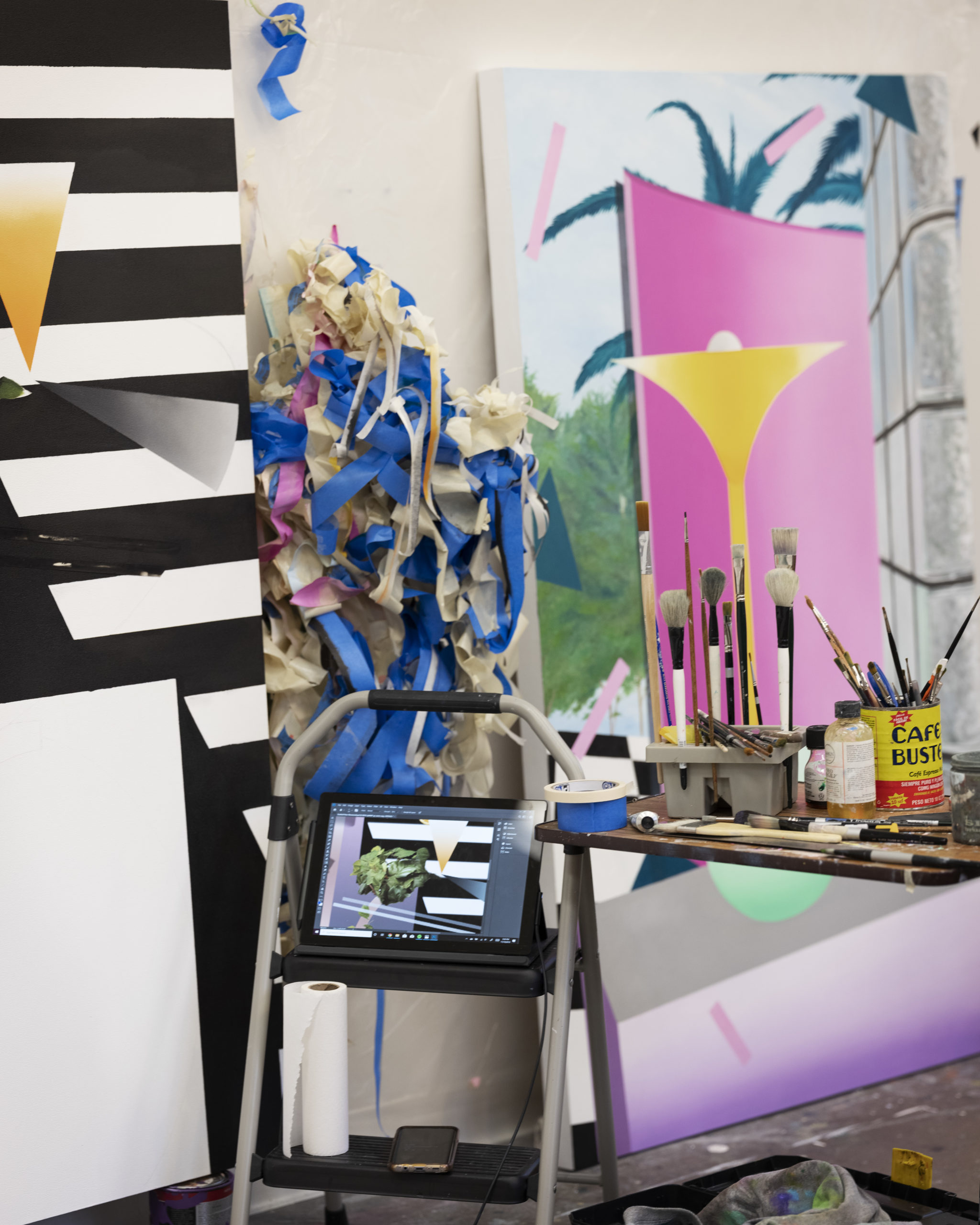
What are you working on now? What’s coming next season?
I just got done with my first solo show IMAGE/SURFACE at Winona State University in Winona, Minnesota, which I am really excited about! Please visit https://visitwinona.com/events/art-exhibit-katie-neece/ to know more about it.
Now I am working on my MFA thesis show which will be held at the Snite Museum of Art at the University of Notre Dame in April 2020.








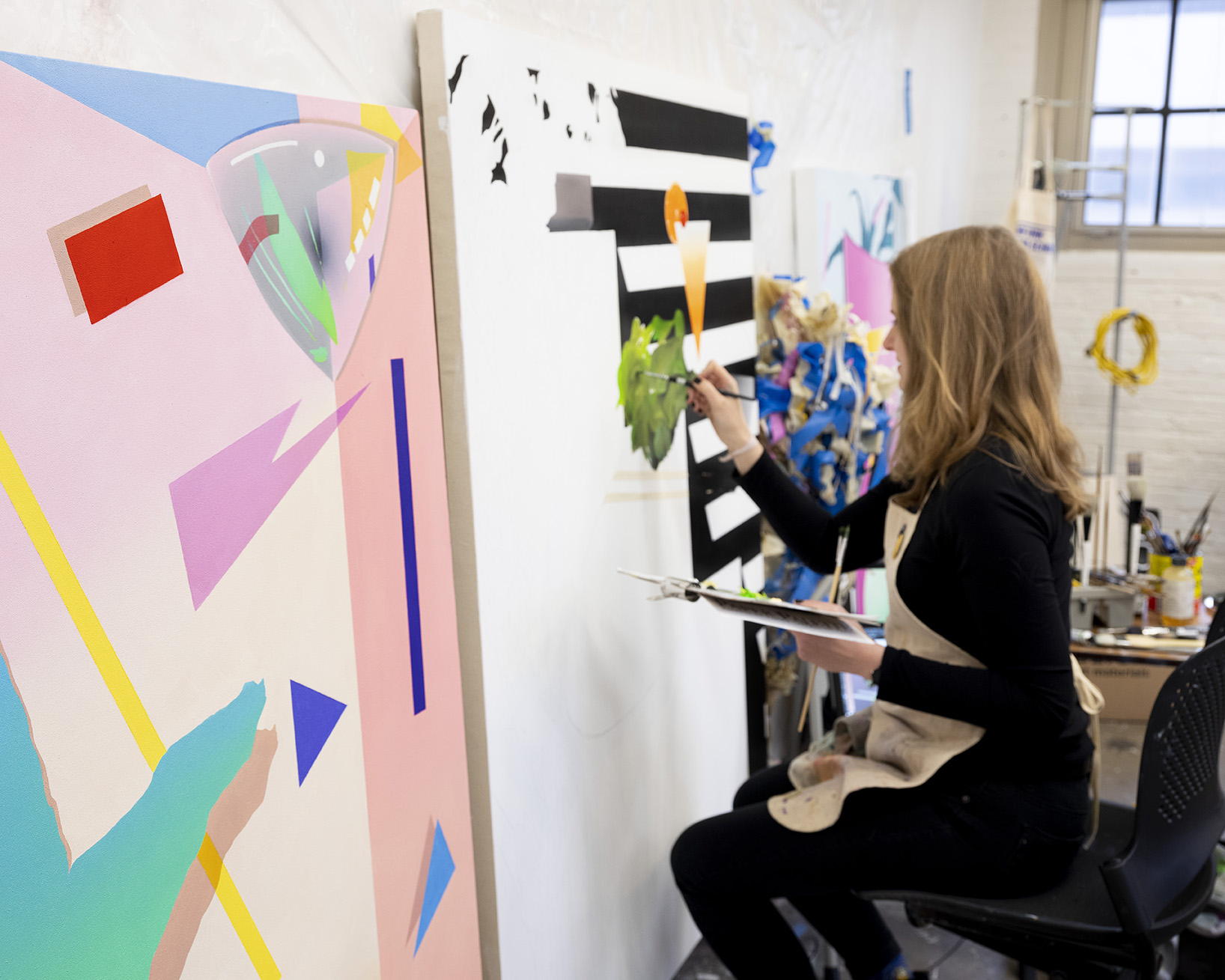



Add Comment